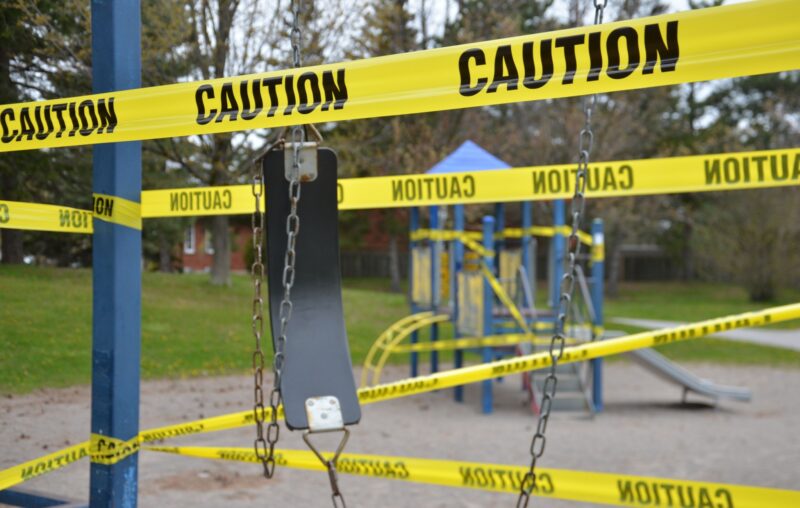Principleless, Panicked and Power-Hungry

Pandemic Panic was a fascinating book to read, especially for a lawyer like me. It very quickly had my blood pressure way up as it reminded me of the nearly three years of governmental thuggery, heavy-handedness, imposition of idiotic and often irrational rules, and resort to lockdown lunacy. If that last sentence sounds as though I was a lockdown skeptic, full disclosure I was. From virtually day one this native born Canadian, who has lived in Australia for two decades, was an open skeptic of the lockdowns in the pages of the Spectator Australia, the British Lockdown Sceptic website (now Daily Sceptic), and once or twice in Law & Liberty in the US. I even had a couple of published peer-reviewed law articles on the topic rejected for listing by SSRN (presumably because only public health types were then deemed suitable to comment on this fiasco, and only lockdown cheerleader ones at that). Right from the start it seemed silly to me, verging on crazy, to think that in conditions of great uncertainty what you ought to do is proceed directly to some version of the precautionary principle on steroids, thereby mimicking the authoritarian response of the Chinese politburo – and in the process throw away a hundred years of data that informed the then pandemic plans of the British government (and the WHO for that matter) and that unambiguously rejected lockdowns.
The smart response in an information vacuum is to carry on as you are making changes at the margins to protect those most at risk as you wait for more information. And very early on it was known that this virus was over a thousand times more deadly to the very old than to the under-thirties. In most countries, for most of the pandemic, the average age of those dying from COVID was over the country’s life expectancy. For governments to proclaim that ‘we are all in this together’ was not true in any sense that could lead to the sort of policy response we saw everywhere in the democratic world outside of Sweden, Florida, South Dakota and a few other outliers that got their responses more or less correct (a fact that today’s cumulative excess deaths data, from start of the pandemic to today, brings home in the bluntest fashion going). Nor should it have led to the sort of massive government spending and debt and money printing that effectively (in part via asset inflation) transferred huge wealth from the young to the old and from the poor to the rich. Or that shut down schools in a way that will see many children, especially poor ones, disadvantaged for life.
So full disclosure, I came to this book very sympathetic indeed to the authors’ underlying position that the national and provincial government responses in Canada were seriously wrong-headed. The authors detail the ‘sometimes inane, often unprecedented and unusual public health measures taken over the roughly three-year pandemic period’. They recount public policy absurdities, including the Province of Quebec requiring unvaccinated people to be chaperoned in plexiglass carts through the essential aisles of big-box stores and the city of Toronto taping off the cherry blossoms and of quarantine hotel nightmares and incompetence. You can read of police heavy-handedness, sometimes more aptly described as thuggery, and of the differential treatment of anti-lockdown protesters as compared to, say, BLM protesters (both during the pandemic). Readers learn that Canada imposed a vaccine mandate for citizens to travel by plane, train or ship domestically or internationally. And that the provinces of Ontario and Quebec had some of the world’s longest lockdowns. Oh, and there are two chapters that touch on the truckers’ Freedom Convoy, especially how the Trudeau government needlessly invoked the Emergencies Act (think ‘threats to the security of Canada’, martial law type legislation) to deal with non-violent – though clearly loud, disruptive and annoying to many – truckers’ protests in Ottawa of the sort that had been dealt with elsewhere in the country using parking by-laws and the Highway Code. This emergency legislation, by the way, allowed the government to seize the bank accounts of anyone participating and assisting the convoy, which it did of many.
Having said all that, the book is very much focused on the law and the legal aspect of the governmental responses to the pandemic. The overarching approach starts with Canada’s entrenched bill of rights, the Canadian Charter of Rights and Freedoms. The two authors, both constitutional lawyers, look at how some of the key enumerated rights fared in protecting Canadians against government overreach. The book is structured so that each chapter considers a different one of the key rights provisions. For example, chapter two considers freedom of assembly, chapter eight freedom of expression, chapter seven the equality right, and so on including religious freedom and privacy rights. Moreover, in terms of running readers through some of the key decisions by the top judges in Canada (and occasionally the US) the book is a handy little primer of cases brought, their outcome, and how the judiciary treated attempts to wind back government pandemic regulations and rules. The short answer to that, of course, is that in case after case after case the judges upheld governments’ COVID measures. The Charter of Rights did nothing. Nor, for that matter, did any bill of rights in any jurisdiction in the democratic world – leave aside one or two ‘churches can open if big stores can, too’ cases in the US and Scotland. But essentially one way to read this book is as a compendium of the myriad failures as regards the attempt to beat (or at least to ameliorate or even just to take the edge off) the lockdown heavy-handedness through the courts.
Thus far thus good then. The book is interesting, informative and with an underlying sense of a pervasive disbelief at just how panicked, principleless and even power-hungry the public health and political castes were during the pandemic. Throw in most journalists too if you wish.
Yet having conceded all that, for my way of thinking the core premise of this book is all wrong. You see I am a long-time skeptic of the desirability of bills of rights and in a way that many Americans will not have encountered. In essence my view is that when you buy a bill of rights you are ultimately just buying the views of the lawyerly caste and of the unelected ex-lawyers who are the top judges. Worse, if you are outside the US there is no way to import US First Amendment jurisprudence, along with your post-WWII Bill of Rights, so that you will almost certainly end up with outcomes that downplay free speech outcomes much more than in the US. In Canada and Europe rights analysis takes place in two steps – first judges decide on the proper scope of the enumerated right and then they move on to consider whether the governmental legislation is a reasonable, justifiable and proportional inroad on it. So stage one is something of a freebie and allows judges to virtue signal because all the work is done at stage two. Worse, this proportionality analysis is at its core plastic and – much as with the claim of Lon Fuller’s hypothetical judge in his famous The Case of the Speluncean Explorers – allows its user to reach either outcome in play perfectly plausibly. You tell me the answer you want, said Justice Keen in that Fuller mock hypothetical Speluncean case, and I can use the approach to give it to you. Ditto proportionality analysis or the second stage in Canadian Charter analysis. (Of course this is not to say that rights in the US are treated as absolute. They are not. It is just to say that in American analysis there is only one step, deciding the scope of the right. This may impose slightly more constraints on the deciding judges. Maybe.)
At any rate, during the lockdowns judges in Canada (and let’s be blunt, around the democratic world) were as panicked as all the other elites. Retired UK Supreme Court Justice Jonathan Sumption may have noted early on that the authoritarian response to COVID amounted to the biggest inroads on our civil liberties in two hundred years. Yet he was a very solitary voice. Nearly all the judges were as frightened and panicked as most everyone else. There was next to no chance litigants were going to roll back governmental regulations through the courts. I said so in print at the start of the crisis and I believe events have proved that true. My take was that we would have to wait till everyone calmed down and the panic subsided and then you would see the judges discover a bit of a willingness to overturn some of these rules and regulations. But as far as the COVID years were concerned the entire edifice of human rights law, and all its accoutrements, was totally useless. Worse than useless in fact.
But I suppose my deeper objection to the foundational worldview on which this book rests is that I do not think we really should even want to live in a world where the lawyerly caste – whose political and social views the evidence today clearly shows to be an order of magnitude or more to the left of, and more ‘progressive’ than, that of the median voter’s – could decide these sort of issues through the courts. And that is true even when we strongly, even vociferously, disagree with what the government is doing, as I did throughout the pandemic. The remedy here had to be political. Elect someone who will stand up to the panic and show what should be done. If we lived in a world where unelected judges could roll back what elected governments did (however stupidly and pusillanimously) trying to deal with a worldwide pandemic then it’s not clear to me what would ultimately be left to the voters and democracy. Put more bluntly, after decades of working in university law schools around the Anglosphere and knowing the lawyerly and judicial caste very well indeed I can tell you that I fully agree with the sentiment William Buckley conveyed when he said that he would rather be governed by the first 2,000 people in the Boston telephone directory than by the Harvard University faculty. For me, make that also the lawyerly caste that gives us our top judges. The authors of this book implicitly disagree with that core sentiment of mine, though our view of the pandemic overreach is much the same. Wherever readers stand on both those issues, this is a book well worth reading.










